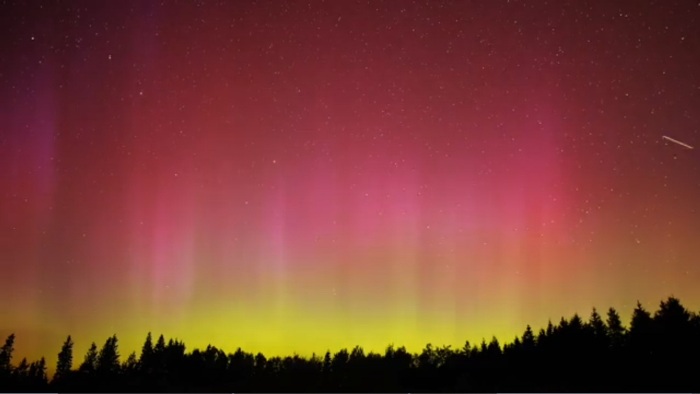Solar Flares Hit Earth: What Are the Effects? Should We Be Worried?
A couple of strong solar flares occurred last week and scientists said that this rare “double whammy” won’t be manifesting on Earth just as majestic auroras. It’s Saturday now, a few days after the solar storms were spotted on the sun’s surface. So what happened to the bursts of charged plasma that traveled to our direction?
Solar Flare – An Introduction
Just a wee backgrounder – a solar flare is an abrupt flash of brightness on the surface of the sun. It is an event that infers a massive release of energy. This energy could be as much as 6 × 1025 joules or approximately 25,000 times more powerful than the impact of Comet Shoemaker-Levy 9 on Jupiter or equivalent to the explosive power of 160 billion megatons of TNT. A solar flare forcefully pushes out clouds of ions, electrons, and atoms that travel very long distances into space. These solar flare clouds usually reach Earth one to two days after the flare incident.
A solar flare generates radiation across the electromagnetic spectrum at all wavelengths after electrons, protons, and ions are accelerated close to the speed of light. Virtually every solar flare takes place in active regions around sunspots where immense magnetic fields penetrate the sun’s photosphere to link the corona to the solar interior. Solar flares happen as magnetic energy stored in the sun’s corona are released.
The first solar flares were observed in as early 1859 as localized intensifications of light in small areas within a group of sunspots. They occur several times per day to once per week when the sun is considered “quiet,” following an 11-year solar cycle. Large flares are relatively infrequent and, fortunately, solar flares that emit particles and radiation that reach Earth are not that frequent.
The Recent Giant Bursts
The recent solar flares took place on September 8 and 10 at an active sunspot region cataloged as AR2158 with a size of around 40,000 miles or around five times the diameter of Earth. According to the the Space Weather Prediction Center the coronal mass ejections or charged plasma from the first flare reached Earth on Thursday night, creating a G2 geomagnetic storm. Geomagnetic storms are rated from G1 to G5, with G5 as the strongest possible rating. The coronal mass projections of the second flare, on the other hand, created a G3 geomagnetic storm as it reached Earth’s magnetic field on Friday evening. The G3 geomagnetic storm of the second flare is expected to last for several hours to a number days.
Effects – Not Much Damage
The charged plasma from the recent major solar flares reached Earth’s magnetic field and created some disturbance. This charged plasma caused strong geomagnetic storms that produced splendidly colorful and beautiful auroras on Friday night. The picture below is a snap of an aurora borealis last Friday taken between 9:30 PM to 10:00 PM from the New Scotland Road just outside of Moncton, New Brunswick.

Screenshot of the September 12, 2014 aurora borealis footage of Tim Doucette (http://www.youtube.com/watch?v=yYXaZ1Kmkcw)
However, not everything will be beautiful with a solar flare manifesting on Earth’s magnetic field. The flares had the potential of causing disruptions on electric grids, radio systems, and GPS. The recent flares were not expected to cause so much damage, though. There have been no reports of major disruptions in wireless communications, the Internet, and global positioning systems. For the most part, the solar flares only stimulated excitement among residents and tourists in various places in the upper northern hemisphere who wanted to witness the spectacular aurora borealis expected by the nighttime of September 11 and 12.
What If These Flares Were Bigger?
It was fortunate that the successive solar flares were not that strong. However, more massive solar flares, successive ones at that, are expected to cause considerable problems. They can cut power distribution off. It is estimated that 20 to 40 million people in the Northeast will experience widespread blackouts or brownouts as power grids get seriously damaged by the disturbances caused by geomagnetic storms.
The damage on electric grids is not theoretical. It already happened back in 1989 as magnetic storms overloaded power grids in Quebec. Severe magnetic storms can fry a considerable number of high-voltage transformers. These transformers are not cheap so a massive extent of overloading could take years to have everything fixed or replaced.
To answer the questions posited on this post’s title — NO, the recent solar flares fortunately did not cause any major incident. While the plasma cloud definitely reached Earth’s magnetic field, there’s no reason to panic or worry about the recent solar flares. However, it will be wrong to completely shrug off the risks of solar flare induced magnetic storms on Earth. It’s still advisable to prepare for an upcoming solar storm.
![By NASA (Solar Dynamics Observatory) [Public domain], via Wikimedia Commons](https://techtheday.com/wp-content/uploads/2014/09/solar-flares-solar-storms.jpg)
![By NASA (Solar Dynamics Observatory) [Public domain], via Wikimedia Commons](https://techtheday.com/wp-content/uploads/2014/09/solar-flare.jpg)